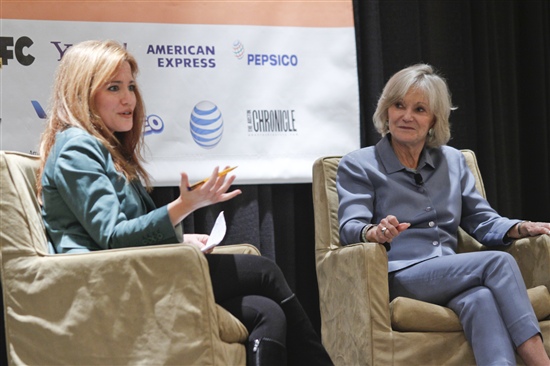Access to startup capital has consistently been cited as a key pain point for female entrepreneurs, but increasingly there are reasons to be optimistic as more women dive into the funding space as both investors and entrepreneurs. Even more exciting, research from Babson College says that if female entrepreneurs in the U.S. started with the same capital as men, they could add as many as six million jobs to the economy within five years.
This week at SXSW Interactive, I sat down with seasoned venture capitalist Kay Koplovitz, co-founder of Springboard Enterprises, a national organization that fosters venture capital investments in women-led high growth companies, to provide an overview of the current market and the various capital options available to growing businesses. In particular, we examined issues that hinder women from receiving outside funding and provided actionable advice to audience members on everything from how to seek the right kind of equity for the appropriate growth stage of your company to developing a plan to raise capital, and targeting experts and mentors to support your goals. During my discussion with Kay, a few key points rose to the top on how women can better increase their opportunities for funding:
- Start asking: According to the department of Commerce, women are substantially less likely to tap outside funding including loans, angel investments or venture capital over their lifetime. It’s not all bad, though. Part of the reason for this is that more women are self-funding and are better at making the most of their resources.
- Speak the language: Women often struggle with speaking to investors in a way that resonates. They are typically more focused on the product and what it does than how it will make their investor a return on their dollar. They also tend to be more focused on areas in the startup space that are of less interest to men or that that they don’t understand as well such as fashion or beauty, which can be tough when you are speaking to a panel of male investors. A way to bridge that gap is to pay attention to the words you use and spend more time on the business of the business.
- Take credit for accomplishments and qualifications: Women seem to have a hard time bragging about themselves, but when you are asking for investment it’s not the time to be modest. If you have two Ph.D’s in a relevant field, make sure it’s known. Your potential investors want to know that you are uniquely qualified to get the job done.
- Look for resources to fill the gaps: I often hear of people struggling to try to get bank loans, but they forget it’s not the only game in town. The Small Business Association has a number of resources for businesses of all stages. Springboard Enterprises, a “venture-catalyst” that has helped companies raise over $5.5 billion, has a great support program for women. The Dell Innovators Credit Fund is a $100 million fund available to accelerate the expansion of entrepreneurs and startups of all sizes. Crowdfunding with popular sites like Indiegogo and Kickstarter has also been a good option for some entrepreneurs, and the JOBS Act will make it even more of a game-changer by opening the door for businesses to market ownership stakes in their ventures to people over the internet.
To learn more about how Dell can help accelerate your small business, visit the Dell Center for Entrepreneurs.

